

| "Our Lady of the Light is an image of the Blessed Virgin Mary, inspired by an apparition to a nun in 1722, in Palermo, Italy. The Virgin asked that a painting depicting the apparition be painted. This directive was taken up by a Jesuit priest, Juan Antonio Genovesi, S.J., who had implored Mary to grant him an image to use in his ministry. The original 1722 painting was destroyed in 1943, with the bombing of the church of Casa Professa during WWII air raids. In 1732, the Jesuits took a copy of the painting to Mexico, where devotion spread. It is venerated today in the Cathedral Basilica of Our Lady of the Light, Leon, Guanajuato" (website: http://www.menofstjoseph.com/blog/). | ||
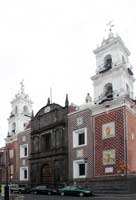
|
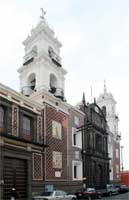 |
A broad facadeThe central facade, of three bays carved in dark stone, is flanked by tile sections in various patterns with end bays supporting the tall bell towers. |
The dome of the crossing clad in tile with sunburst patterns with an elegant domed lantern which is topped with an oversized finial; and the classical bell towers with simple engaged piers, an elaborate entablature, and gently arched openings | ||
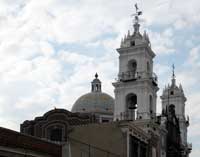
|
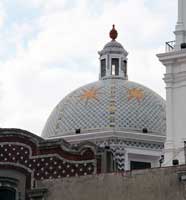
|
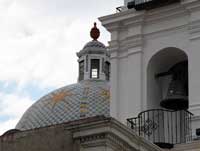
|
The bell tower, with three registers decreasing in size, topped by a small cupola |
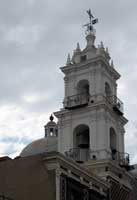
|
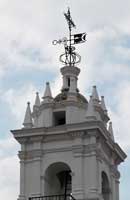
|
Inset polychrome panels depicting the Virgin of Light, Joseph, and Mary's parents, Joachim and Anne | ||
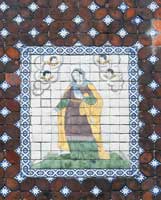
|
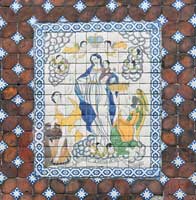
|
The center panel, labeled below the figure, depicts the Virgin of Light who is presented a basket of flaming hearts on the right as she rescues a sinner from the mouth of hell on the left. (See a painting of this subject.) |
| On the far right, Joseph is depicted (labeled below the figure on the panel). His representation on the opposite side of the facade, echoes that of the Virgin, with the angel with the basket of flaming hearts and the jaws of hell. | ||
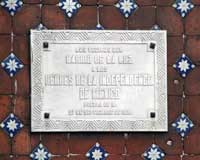
|
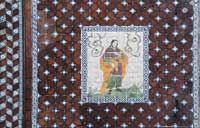
|
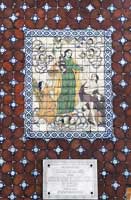
|
Smaller panels flanking the entrance facade--Symbolic attributes of the Virgin of Light: a palm, a cedar?, a well, and the fourth on the facade I neglected to photograph | ||
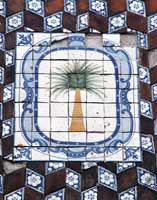
|
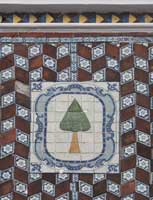
|
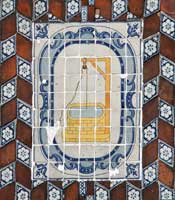
|
Work Consulted:
Guía. Arquitectura representativa de la ciudad de Puebla. Puebla: Centro para la Conservación del Patrimonio Cultural Tangible e Intangible A. C., L'Anxaneta Ediciones, 2008.
 Go to the Mexico Index.
Go to the Mexico Index.
 Click here to return to index of art historical sites.
Click here to return to index of art historical sites.
 Click here to return to index of artists and architects.
Click here to return to index of artists and architects.
 Click here to return to chronological index.
Click here to return to chronological index.
 Click here to see the home page of Bluffton College.
Click here to see the home page of Bluffton College.

